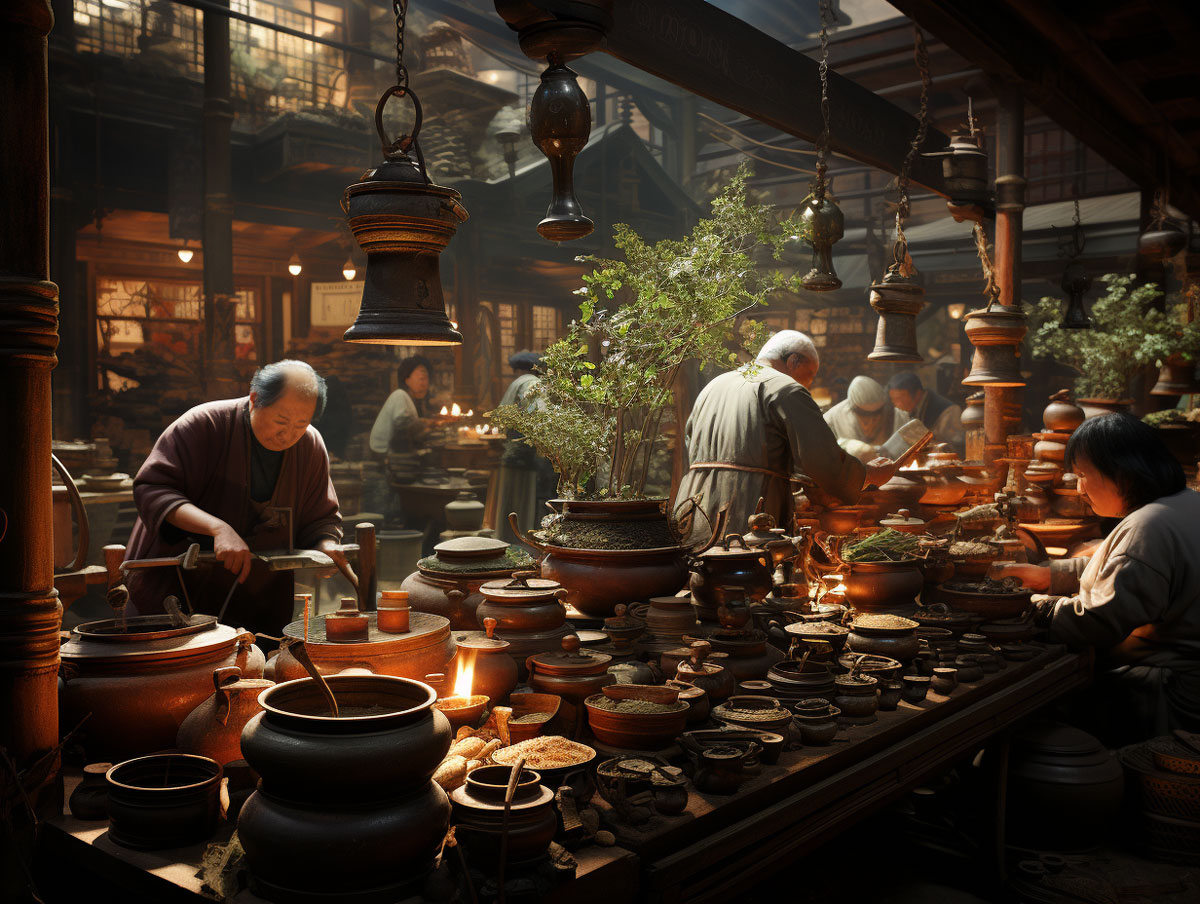Qi » Wellness Blog » Tea Blog » The History of Puerh Tea Trading

The History of Puerh Tea Trading
Discover the captivating journey of Pu-erh tea trading history, woven with trade, culture, and innovation:
- Song Dynasty: The “Tea-Horse market” in the “Bu-ri ministry” laid the foundation for Pu-erh. It facilitated trade between the Song Empire and Tibet, exchanging local tea for Tibetan horses, and silk, brocade, and jewelry from the Song Empire.
- Yuan Dynasty: “Bu-ri” evolved into “pu-ri” under Mongol rule. Pu-erh tea expanded its trade network, even reaching Russia alongside meat and dairy.
- Ming Dynasty: The Ming government took charge of Pu-erh tea trade, offering various Pu-erh varieties as tributes to the royal court.
- Qing Dynasty: The government boosted Pu-erh trade through copper and salt mining, making Pu-erh a bustling center in southern Yunnan.
- Tea-Horse Routes: Pu-erh connected four major tea-horse routes, promoting cultural and trade exchanges.
- Late Qing Dynasty: Significant developments occurred, including the 211 km Tea Horse road from Yi-wu to Si-mao, paved with bluestone.
- Early 20th Century: Post-revolution, Han and Dai traders established tea plantations, leading to thriving tea trade until border closures disrupted southern trade.
- World War II: Pu-erh reached Japan and Western Europe markets during this period.
- Post-war Era: Pu-erh trade prospered as it became a renowned center in Japan and Western Europe.
- 1950s: The People’s Republic of China promoted old and new tea plantations, increasing production and international trade.
- 1975: New Pu-erh factories produced various teas, available for sale within China and abroad.
Throughout its history, Pu-erh tea has played a pivotal role in trade and cultural exchange, continuing to be cherished and sought-after today.
Alex Wolfgram
Alex Wolfgram is the creator of Qiful Life. After spending nearly a decade in Asia learning Qigong, Meditation, Tea Chinese Medicine concepts and Buddhism, he decided to move back to the U.S. and begin sharing what he absorbed. Alex currently teaches Qigong and Meditation by private appointments via Qiful Life's platform. He also hand picks each of the teas offered on the site. Currently, Alex is developing the Qiful Life podcast covering subjects related to Chinese health concepts, Spirituality and the Dao De Jing.






